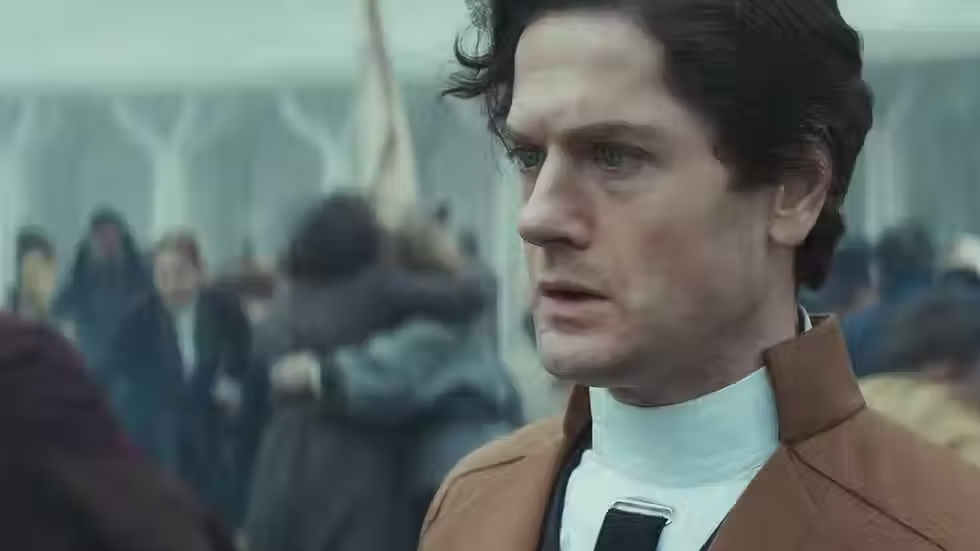Review: The Timekeepers of Eternity
- ogradyfilm
- Oct 21, 2023
- 2 min read
[The following review contains MAJOR SPOILERS; YOU HAVE BEEN WARNED!]
With The Timekeepers of Eternity, Aristotelis Maragkos accomplishes the impossible: he makes Tom Holland’s The Langoliers watchable.

The experiment is far from perfect, of course; the raw footage is, after all, so fundamentally flawed that no amount of re-editing, remixing, and recontextualization can totally “fix” it (the dialogue, for example, remains infuriatingly nonsensical, plagued by constant inconsistencies, contradictions, and inorganic leaps in logic). Still, by condensing the multi-episode miniseries—a format that is, in my opinion, inherently ill-suited to sustaining a narrative that features only two locations populated by roughly a dozen people—into a comparatively lean hour-long film, Maragkos at the very least addresses the source material’s clunky pacing, trimming a lot of excess fat and bloat.
Don’t get me wrong: I like rich, well-developed characters as much as the next viewer. The meat of this particular conflict, however, lies not in complex interpersonal relationships, but in the novel premise: our protagonists (a ragtag group of airline passengers) find themselves inexplicably stranded in an empty “past” that is rapidly vanishing beneath their feet, and must escape before they are devoured by the metaphysical forces that govern the universe. Although this dilemma is more than substantial enough to keep the audience invested in the action, the ‘95 cut of The Langoliers includes an overabundance of extraneous melodrama that stretches the otherwise straightforward plot to its breaking point, resulting in a severe lack of urgency. The Timekeepers of Eternity, on the other hand, omits nearly every detail that isn’t immediately relevant to the central concept, thus crafting a more economical, suspenseful experience.

But the movie’s remarkable metamorphosis is not merely structural; Maragkos remixes even the visual style. While The Langoliers’ cinematography was perfectly serviceable, it was also rather unambitious and uninspired, betraying its made-for-TV budget. The Timekeepers of Eternity’s shift to black-and-white adds depth and texture to the compositions, evoking the moody, haunting atmosphere of The Twilight Zone. The aesthetic alterations don’t stop with the color palette, either: Maragkos utilizes a variety of digital effects and filters in an effort to depict the story’s somewhat abstract, unconventional approach to “time travel” in literal, concrete terms. The image frequently warps and distorts, fragments and fractures, crumples and tears. Certain scenes are repeated in quick succession; others are truncated or overlap with concurrent events. Beyond contributing to the surreal tone, these expressionistic flourishes are also thematically appropriate, reinforcing the idea that the fragile fabric of reality itself is gradually unraveling around our hapless heroes.
Maragkos’ bold choices aren’t always beneficial; his revised ending is especially egregious, repurposing the original version’s final complication into a cruel, dark twist—an abruptly and arbitrarily nihilistic conclusion that left a bitter taste in my mouth. Nevertheless, the project is ultimately a resounding triumph, redefining the meaning of the term “transformative work.” The Timekeepers of Eternity is no shallow parody—a fan trailer that reimagines Ace Ventura as a tense thriller, or audio clips from Sonic the Hedgehog chopped up and reassembled to make Doctor Robotnik say dirty words; on the contrary, it’s a charmingly sincere reinterpretation (and rehabilitation) of an old, forgotten Stephen King adaptation that is, in retrospect, genuinely deserving of reevaluation. It is, in conclusion, innovative, audacious, and absolutely revolutionary.





Comments